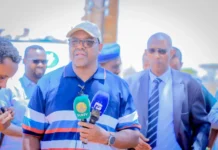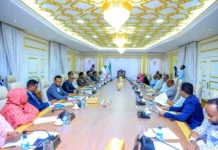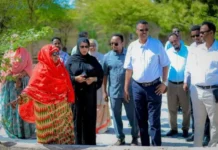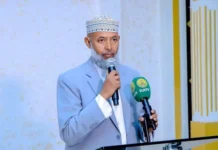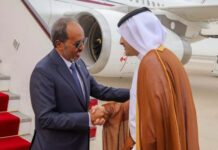The story about the quick paceof the Tyrant, General Siyad Barre escaping from his Castle, Vila-Somalia, in 1991 to Kismayo city and then to Kenya proceeding towards Nigeria, where he lastly died isolated and lonely is a story that highlightson two important facts:First, that the destiny of any dictator ends in thesame tragedy, secondly, the failed state of Somalia that he made it ruinand left behind its ashes can’t be rebuilt without long andpainstaking concerted efforts ofthe grassroot fora true nationwide reconciliation process.Dependablecriteria forsuccessful reconciliation endeavors ought to be conformable withthe following principles and approaches:
Principlesand approaches: In the developing countries in general and today’s Somalia in particular a distinguished leadershiparmedwith visionand sensible message based onstrong attachment to the cause of peace and state building and whose ability and sense of responsibility goes with high standard ofmorality remains absolute necessity needed for successful reconciliation endeavors.Such aleadership should have deep conviction and knowledge that the failed state of Somalia can’t be reassembledby using the same methods and instruments that led to the destruction of its preceding. Rebuilding a failed State requires conversance of the causes and effects that led to its demise.The alternative tothe methods of forcing, starving and imposinginstructions from above and from abroad lie in agenuine home-made reconciliation and forgiveness.
Bottom-up approach should be taken as the basicmeasure contrary to excessive up-bottom schemesthatunderminesthe trust anddestroys consensus-based compromises.Dependence on foreign countries in the process of reconciliation and state building is anegation of the basic norms of national identityand sovereignty. However,with good faith, the International Community guided by the values of Liberalism and humanism can support, but their assistance can be helpfulonly when the internal politicalforces are mature,united and operative.Genuine National Reconciliation endeavors should depend on local resources, both on material and mental levels. Internally functioning extreme radical forces, such as Political Islam should be dealt notby means of military force only but with political means as well,such efforts can be made effective only when thepeace forces are ina position of purposeful union and determination.
These are some main principles and approaches among others that arepertinent tothe cause ofpeace and state building mission in thepost-civil war situations in particular.However, thekey question is to what way these principles and approaches are being applied in the current conflict between the Federal Government and the Regional States.In this regard, one should take in to full-account that theheartof the conflict lies in the differences of the twoopposite concepts: Authoritarianismand egalitarianism in relation to the approaches thathave recently beenpursuedby the two opposite sidesin the Kismayo conflict. In this regard, the Jubaland’s process was seen as necessarily not perfect but certainly a better choice against the re-occupation attempts by the Federalauthorities.
On the other hand, one should keep in mind that this is a transitional processand the five Regional States have the same cause and purposeas theyneedto build democracy with functionalFederalismwhere the people in the regional states becomethe real makersof that Federalism and realize they are the owners of their destiny when Bottom-up approach is entirely absent and cooperation with Federal became unbearable. That is why theother regional states see the process in Kismayoas agleam of hopeemerging through thefar edge of the tunnel where a new thinking and new approach to the conflict resolution in Somalia is lighting through which the road to realization of democratic new-Somaliaiscoming nearer and closer. Unfortunately, the gap between the Federal government and the Regional States continueto widen and further deteriorating as a result of the conflict between Reconciliation and reoccupation positions.
As a final point, the simplistic and misleading question on where Somalilandstands regardingthe ‘Somali crisis’ in general and whether Somaliland is part of the problem or a lighton the road tosolution. On this regard,I would like to display the fact that the Somaliland argument is simple and clear, and goes saying, show me a new thinking and new approach to the issue of conflict resolution, where the hope beginsthat a peaceful and democratic Somalia is within the scope of possibility,the pointwhereIwould be able toshow you where Somaliland stands?.
Adam M. Jibril can be reached by
email: adamjibril@hotmail.com
Tel.00252634426175


